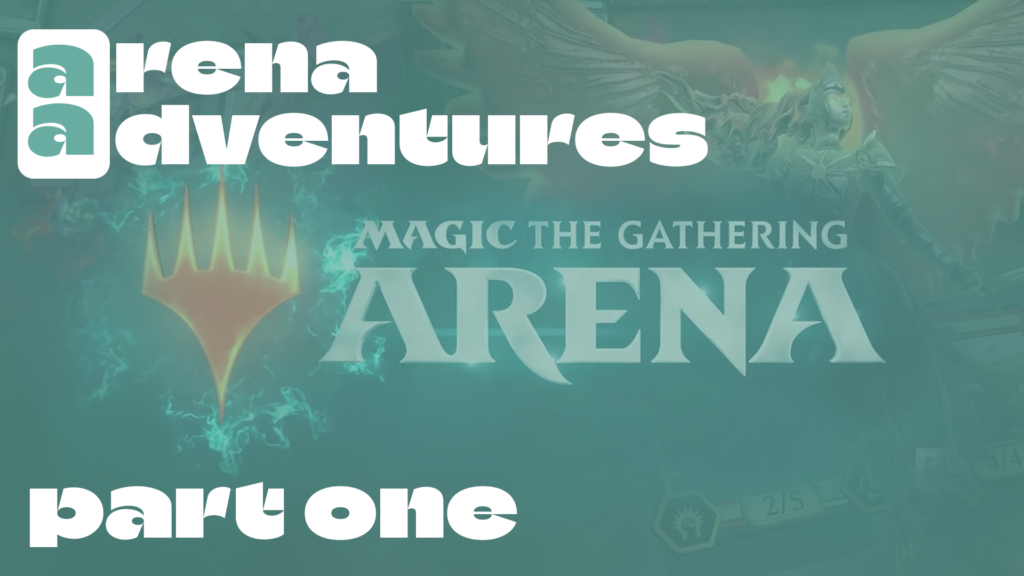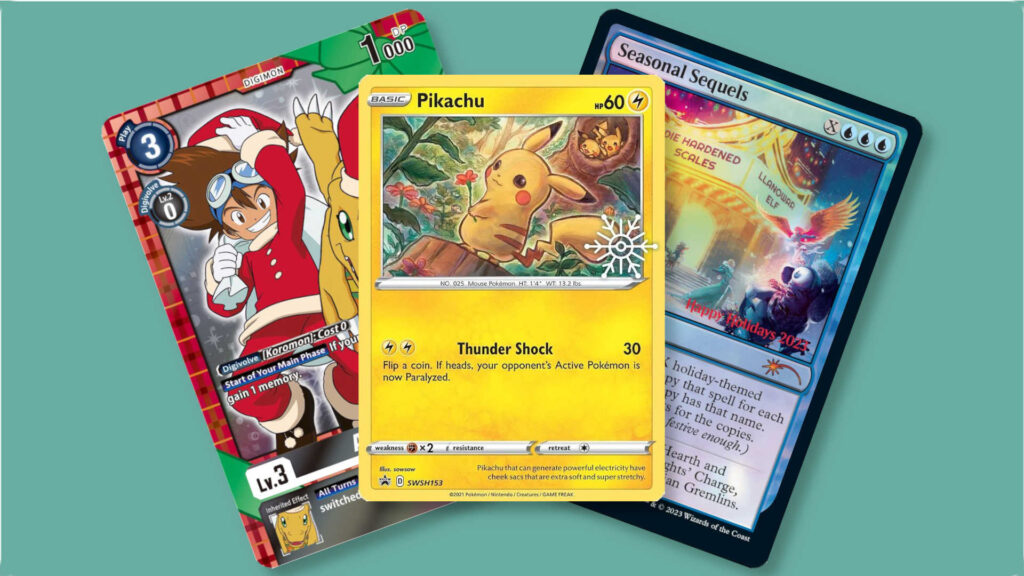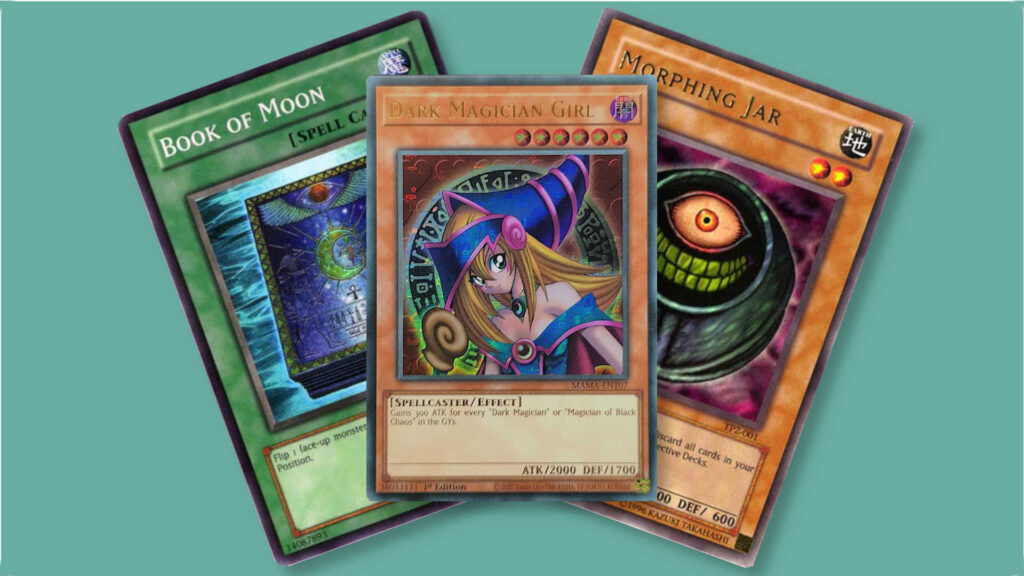Table of Contents
The First Step
Hello and welcome to Arena Adventures, a new series where I’ll be taking a fresh Magic: The Gathering Arena account as high up the Standard ranked ladder as I can. Before we get started, I’d like to talk a little bit about my experience with Magic. I’ve largely played Commander, with a small amount of Pauper and a slightly larger amount of Standard mixed in along the way. I’ve definitely got more experience with Commander than any other format, though, so I’ll be gaining a deeper understanding of the Standard meta as I move my way up the ladder.
So, with that out of the way, let’s talk about what Arena’s like on a fresh account. I jumped into some (unranked) Standard play to see how the two-color decks that every new account gets would fare against the rest of the community’s creations. And, to my surprise, I actually did pretty well. I made a point of playing a game with each of the decks and was pretty happy with the results. I lost with Golgari Food, Boros Discover, and Simic Ramp. But, I won with Azorius Clues, Gruul Dinosaurs, Dimir Faeries, Rakdos Outlaws, Orzhov Smallball, Selesnya Mounts, and Izzet Double-Spells.

For those who are unfamiliar, here’s a brief summary of each deck’s game plan:
- Faerie Pranks is a Dimir (blue and black) deck that aims to control the board and swing in with hard-to-block Faeries for the win.
- Outlaw Posse is a Rakdos (black and red) deck that aims to fill the battlefield with Assassins, Mercenaries, Pirates, Rogues, and Warlocks to win.
- Power to the People is an Orzhov (black and white) deck that plays small, efficient creatures and wins through combat with those creatures.
- Snack Time is a Golgari (black and green) deck that makes several Food tokens and takes advantage of cards that care about Food (artifact tokens that can be sacrificed to gain life).
- Second Chance is an Izzet (blue and red) deck that casts exactly two spells on each of its turns, getting stronger whenever it does so.
- Desert Oasis is a Simic (blue and green) ramp deck that wants to have access to a lot of mana, winning by putting big creatures on board ahead of schedule. “Ramp” means gaining access to more mana than usual, through playing additional lands or creatures that tap to add mana.
- Ancient Discovery is a Boros (white and red) Discover deck that aims to cast spells for free whenever possible.
- Dino Might is a Gruul (green and red) Dinosaur deck that puts some big, scary Dinosaurs on the battlefield and hits its opponents hard.
- Crack the Case is an Azorius (white and blue) Clue token-themed deck that also cares about Detective creatures, aiming to draw cards with Clues and beat face with detectives. (Clues are artifact tokens that can be sacrificed to draw a card.)
- Saddle Up is a Selesnya (white and green) Mounts deck that cares about tapping creatures, making those creatures bigger, and hitting opponents with those creatures. (Mounts are a special creature type that allow other creatures you control to be tapped, giving the Mount creature some special ability.)
While none of the decks were particularly strong or weak when compared to the others upon a first look, I was happy to see that Wizards provides new players with an easy way to see what each of the two-color pairs can do. But, upon taking these decks into the more competitive ranked circuit, I noticed something interesting. After trying a few of them in ranked games, there were some flickers of greatness. Even though the decks weren’t perfect, I felt like there was potential in some of them. So I decided that I wanted to take one of these decks to its logical extreme. I didn’t know exactly which one I would choose, but I knew that I wanted to invest in one of these decks. One of these imperfect two-color decks would become my workhorse, and I’d take it as far as I possibly could up the Standard ranked ladder.
Time to Climb
Before I invested my precious few wildcards into one of these decks, I had two main goals:
- Get to Gold 4, the real starting point for my ladder climb
- Find out which of the 10 decks felt strongest against the meta
To achieve that second goal, I’d need to test out each of these decks as I climbed up to Gold 4 (the lowest rank in Gold, a middling position on the ranked ladder) to complete the first goal. So, here are my thoughts after some ranked games with the starter decks.
I was initially high on the Selesnya Mounts deck, as it was my favorite in early unranked testing. But the deck had an unfortunate problem of being unable to turn the corner in most games. I would put somewhere between four and six power on board, have a significant portion of that power removed by a single copy of Cut Down or some Oblivion Ring effect, and lose in a drawn-out brawl. I lacked enough card draw or graveyard recursion to survive having a key creature removed from the battlefield, meaning that this deck was just not what I was looking for.
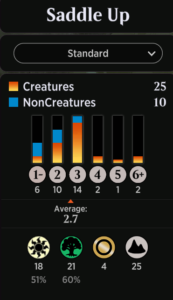
I was similarly disappointed by the Azorius Clues and Gruul Dinos decks. While the Azorius Clues deck was cool in concept, it felt like it lacked some of the classic Azorius control elements I wanted. If I’m already holding up mana to crack a Clue, another Counterspell or two would have been nice additions. There was also a distinct lack of high mana-cost payoffs to close out the game. Overall, big gaps in the deck’s construction mean that it would need significant work to become fully operational. As for the Dinosaur deck, the ramp was too sparse and the Dinosaurs too small. The deck’s only ramp came in the form of Hulking Raptor, and it had underwhelming Dinosaurs like Panicked Altisaur. That’s a shame, as I had high hopes for this big-mana strategy (I’m a Commander player after all).
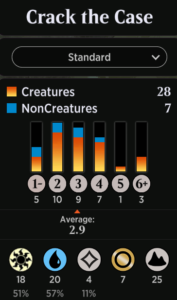
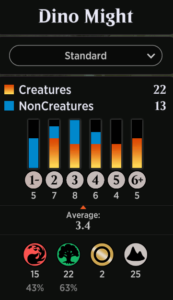
The Boros Discover deck was also very exciting to me, but felt relatively discordant when actually played. While it had some isolated powerful cards like a Bonehoard Dracosaur, the rest of the deck was split between token synergies, tapping synergies, and getting free spells from my library. It felt like “Boros’ Best Hits: The Deck,” but there just weren’t enough support cards to make the deck consistent. It would require a large overhaul to climb the ranks with, and for that reason I was out.
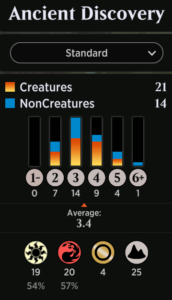
The Simic Ramp deck immediately interested me. If a deck that gets more mana and draws more cards than its opponents isn’t the epitome of Simic, I don’t know what is. I was pleased to see that this deck did one of those two things quite well. Through Rootrider Faun and even a copy of Bonny Pall, Clearcutter, this deck ramped pretty well. I usually had no problem casting my four-plus mana spells at least one turn ahead of curve, although it did lack the card draw to keep going after I’d emptied my hand. But, that’s only one piece of the deck that’s in dire need. So far, the Simic Ramp list was my favorite.
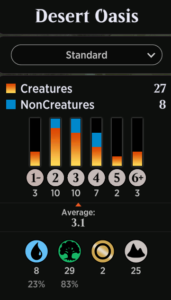
As someone who played Niv-Mizzet, Parun in cEDH before the recent bannings, the Izzet Double-Spells deck was intriguing to me. This deck had a ton of creatures that cared about casting multiple spells per turn, but not enough cheap spells to actually cast. It’s always tricky to find the right balance between payoff creatures and cheap spells in these kinds of decks, and I think this one failed. Just like a lot of the other decks, this one felt like too weak of a starting point. I felt similarly about the Golgari Food deck, which felt more like a pile of green and black cards that also happened to make a few Food tokens. It, too, was not a strong enough base to build from.
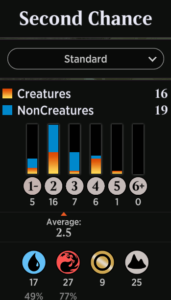
We’re down to the last three decks: Orzhov Smallball, Rakdos Outlaws, and Dimir Faeries. I tried out the Orzhov Smallball deck, but it felt really bad. The strategy boiled down to putting a few two-mana creatures like Outlaw Medic or Ironpaw Aspirant on the battlefield, and sitting there as my opponent advanced a more powerful strategy. This deck just doesn’t do much, so it wasn’t the way forward.
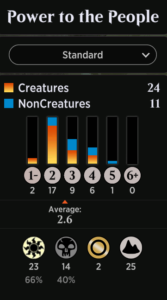
The Rakdos Outlaws deck, similar to the Boros Discover deck, had a little bit too much going on. It had Outlaw synergies with Rakish Crew and Laughing Jasper Flint, but was also focused on targeting our opponent with cards like Magda, The Hoardmaster and Kaervek, the Punisher. This lack of focus made it a less appealing option.
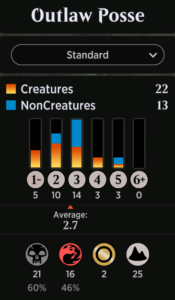
That just left the Dimir Faeries deck, which I was actually quite happy with. I’ve always liked playing control decks in 60-card formats, so I had a feeling I would like this one coming in. And I was right! The deck had card draw, counterspells, and even ran Sleep-Cursed Faerie (a mediocre card that I’m determined to make work). This deck had me hooked, and I now had two options I was willing to roll with.
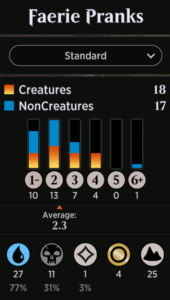
A Split Decision
After some time testing these decks and climbing through the ranks, I found myself in Gold 4. After extremely thorough and rigorous scientific testing (i.e., playing subpar preconstructed decks for a few hours) I had completed both goals. I was at the point in the ranked ladder where the climb would truly begin, and I had two decks that I saw easy upgrade paths for. Now came the hard part: committing to one of the two options. But, instead of choosing myself, I’d like to let all of you choose, Card Gamer readers! Let me know in the poll below which deck you think I should choose. The lists can be found at the links below. I look forward to hearing your thoughts.
https://www.archidekt.com/decks/9761989/desert_oasis_starter_deck
https://www.archidekt.com/decks/9761982/faerie_pranks_starter_deck
I’ll see you all next time, when I take the deck you choose, upgrade it a little bit, and keep moving through the ranked ladder.
Ready for more Arena Adventures? Then head to Part Two here. Or check out more of our Magic content here.

